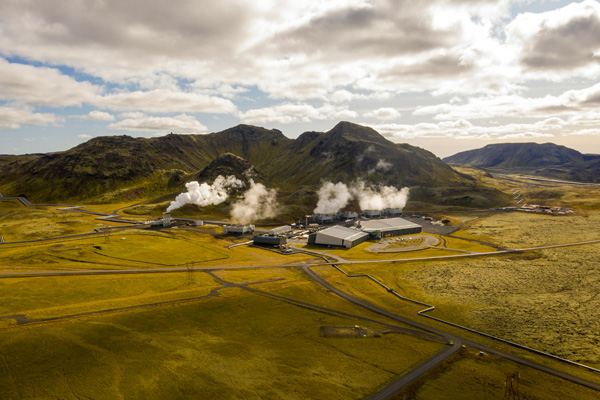Enhanced geothermal systems are driving innovation in renewable energy

[Image of geothermal power station, Credit of Pexels]
According to the Stanford Doerr School of Sustainability, Professor Roland Horne announced in February that Enhanced Geothermal Systems (EGS), a renewable energy technology that utilizes artificial underground reservoirs, has made significant advancements.
Traditional geothermal energy has long been confined to specific regions where underground heat, water, and permeable rock naturally coexist.
Due to these geological constraints, its use has been predominantly limited to volcanic areas such as Iceland, Japan, and the western United States.
In contrast, EGS bypasses these geographical limitations by injecting water into deep, hot rock formations, allowing geothermal energy to be harnessed in a broader range of locations.
Unlike solar and wind power energy, which rely on weather conditions, EGS can operate continuously, providing a stable and reliable energy source.
This reliability addresses one of the most pressing challenges facing many renewable energy technologies today: inconsistency in energy production.
Although geothermal power has existed for more than a century, with the first geothermal power plant built in Italy in 1904, it still contributes only a small fraction of global electricity generation, contributing less than 0.5%.
In countries like Kenya, geothermal energy supplies nearly half of the nation's electricity, yet globally, wind and solar produce over 25 times more energy than geothermal sources.
With recent technological advancements, EGS has the potential to expand geothermal energy’s role in the global energy mix.
At the Stanford Doerr School of Sustainability, Professor Roland Horne and his research team are dedicated to reducing the cost of EGS through advanced drilling technologies.
Innovations such as synthetic diamond drill bits and horizontal drilling have significantly shortened the time needed to drill geothermal wells.
What once took several months can now be accomplished within just a few weeks, making EGS more cost-effective and viable for large-scale adoption.
A recent study led by Stanford PhD researcher Mohammad Aljubran examined the impact of these drilling advancements.
The findings indicate that by 2027, EGS could generate electricity at a cost of approximately $80 per megawatt-hour (MWh), making it competitive with the average electricity prices across much of the United States.
This potential cost reduction could accelerate the adoption of geothermal energy as a mainstream renewable source.
Currently, California relies on geothermal energy for about 5% of its electricity.
Researchers estimate that with EGS, the state’s geothermal capacity could expand significantly over the next few coming decades.
This growth would strengthen the clean energy grid, ensuring a stable electricity supply while reducing dependence on fossil fuels.
One of the primary concerns with EGS is its potential to cause small earthquakes, a phenomenon known as induced seismicity.
This occurs when underground rock fractures due to water injection.
To mitigate these risks, scientists have developed several safety measures.
One approach is careful site selection, avoiding earthquake-prone areas like the San Andreas Fault in California.
Another precautionary measure is the use of a real-time monitoring system that detects seismic activity and adjusts drilling operations accordingly.
If minor tremors occur, the system signals operators to slow down or stop drilling.
Additionally, researchers have found that breaking the rock into many smaller fractures instead of a few large ones can significantly reduce the chances of triggering stronger seismic activity.
Professor Horne explains that instead of injecting water all at once at high pressure, gradually introducing it over time helps prevent sudden underground stress.
This "drip-drip-drip" approach improves safety while maintaining the efficiency of energy extraction.
The Stanford Doerr School of Sustainability was established in 2022 with a $1.1 billion donation from venture capitalist John Doerr and his wife, Ann Doerr.
The school is committed to advancing studies in climate research, renewable energy innovation, biodiversity conservation, and sustainable development, with the goal of advancing solutions for a cleaner and more sustainable future.

- Sungyoon Lee / Grade 10
- Dwight School Seoul

![THE HERALD STUDENT REPORTERS [US]](/assets/images/logo_student_us.png)
![THE HERALD STUDENT REPORTERS [Canada]](/assets/images/logo_student_ca.png)
